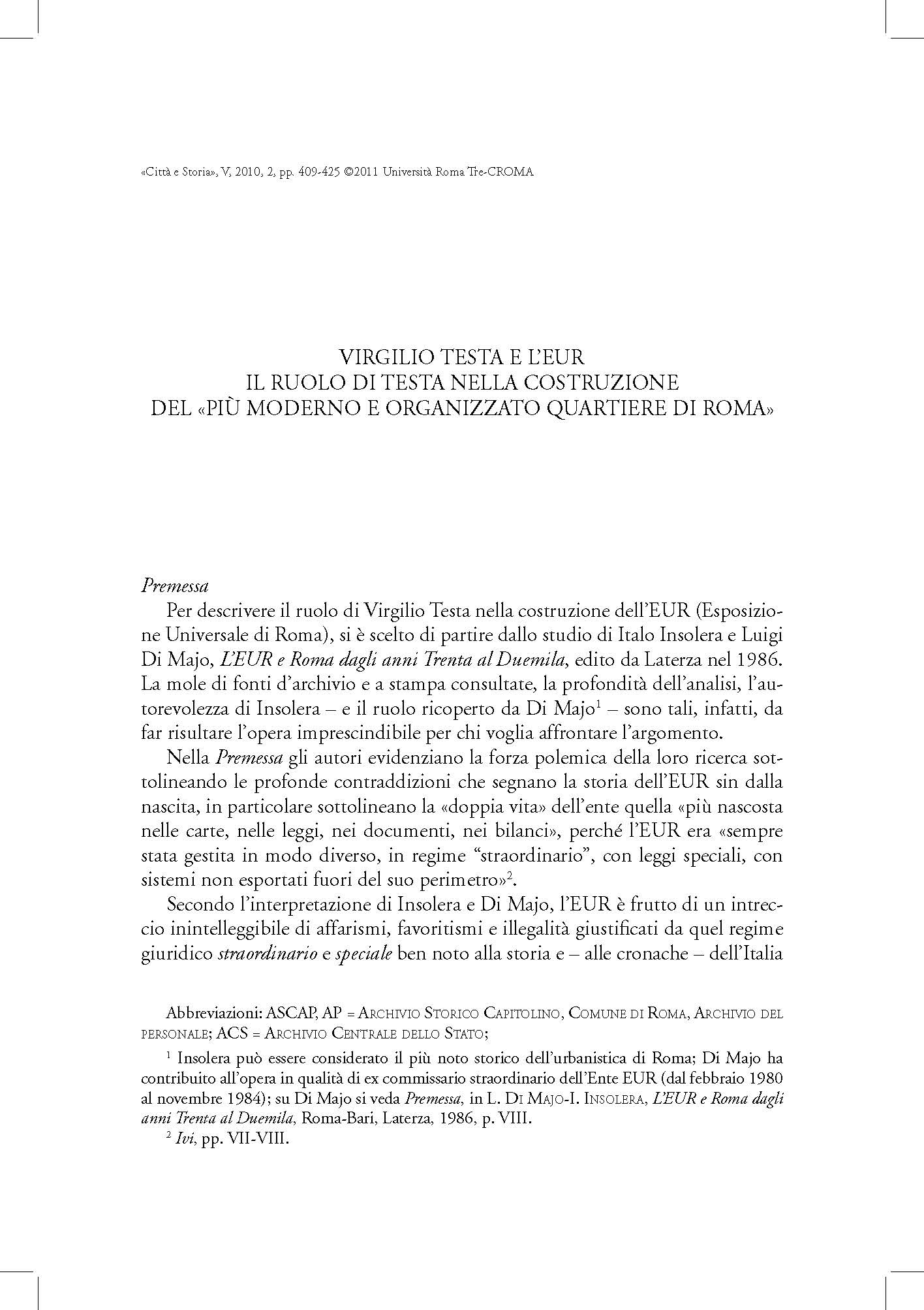Virgilio Testa e l’Eur. Il ruolo di Testa nella costruzione del «più moderno e organizzato quartiere di Roma»
6,00 €
The starting point for describing Virgilio Testa’s role in building the Roman district of EUR (Universal Exposition of Rome) is a book by Italo Insolera and Luigi Di Majo (L’EUR e Roma dagli anni Trenta al Duemila, Laterza 1986) which presents a negative judgement of its planning, construction and urban layout.
The reasons for this mistaken evaluation are to be found in certain ideological preconceptions which, stemming from a negative view of Fascism, lead to a blanket condemnation of everything achieved during the Fascist period.
The interpretation suggested in this work lies in the biography of Virgilio Testa, urban planner and originator of the EUR. In 1928, as an expert, he sketched out the district; from 1935 onwards, as town clerk, he helped to plan it and, from 1951 to 1973, as commissioner, he oversaw its realisation. Testa was an exponent of the pragmatic urban culture that flourished in pre-Fascist Italy.
From this point of view the history of the EUR emerges as more complex, and certainly more positive. It is, in fact, thanks above all to Testa’s professional and ethical qualities that the EUR did not become a disaster of town planning but, as the historian Vittorio Vidotto wrote in 2001, “the most modern and best organised district of Rome”.
The starting point for describing Virgilio Testa’s role in building the Roman district of EUR (Universal Exposition of Rome) is a book by Italo Insolera and Luigi Di Majo (L’EUR e Roma dagli anni Trenta al Duemila, Laterza 1986) which presents a negative judgement of its planning, construction and urban layout.
The reasons for this mistaken evaluation are to be found in certain ideological preconceptions which, stemming from a negative view of Fascism, lead to a blanket condemnation of everything achieved during the Fascist period.
The interpretation suggested in this work lies in the biography of Virgilio Testa, urban planner and originator of the EUR. In 1928, as an expert, he sketched out the district; from 1935 onwards, as town clerk, he helped to plan it and, from 1951 to 1973, as commissioner, he oversaw its realisation. Testa was an exponent of the pragmatic urban culture that flourished in pre-Fascist Italy.
From this point of view the history of the EUR emerges as more complex, and certainly more positive. It is, in fact, thanks above all to Testa’s professional and ethical qualities that the EUR did not become a disaster of town planning but, as the historian Vittorio Vidotto wrote in 2001, “the most modern and best organised district of Rome”.

